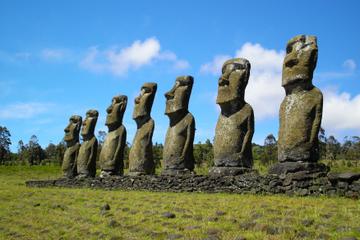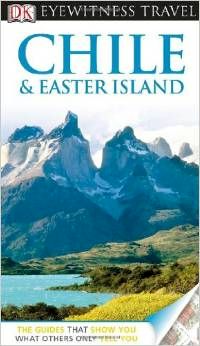« CHILE • Discover Chile • Easter Island
Discover magical Easter Island
Whether watching the sunrise over the coastal Ahu Tongariki, rambling through ancient volcanic rock quarries, celebrating at a traditional Polynesian festival or snorkeling through crystalline waters, visitors find that Easter Island is a destination like no other, and its magnetic appeal leaves many longing to return
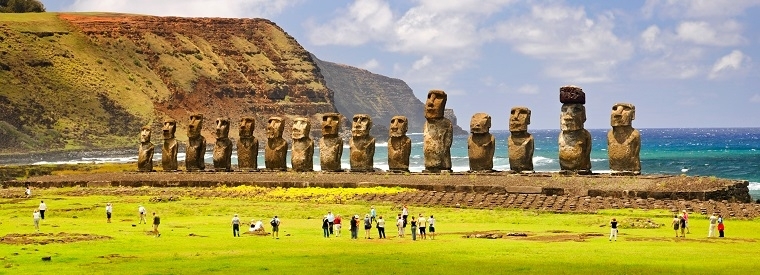
A | B | C | D | E | F | G | H | I | J | K | L | M | N | O | P | Q | R | S | T | U | V | W | X | Y | Z
» Ahu Akivi
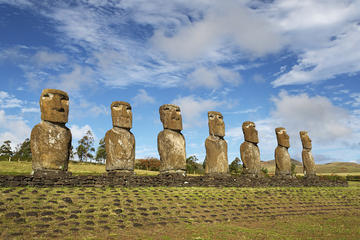
Restored by archaeologists William Mulley and Gonzalo Figueroa in 1960, the seven grand moai that make up Ahu Akivi are among the most visited attractions of Easter Island. Dating back to the 15th century, the moai are thought to have been built in three stages and are unique in their placement - not only is Ahu Akivi one of few moai sites located inland, but the moai are the only ones on the island that face toward the ocean. Legend has it that the seven identical moai of Ahu Akivi were built in honor of the seven explorers sent to discover the island by founder Hotu Matu'a …
» Ahu Tongariki
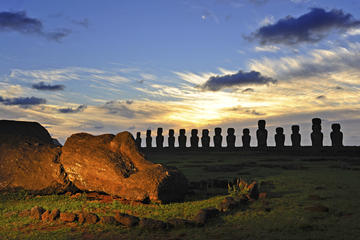
With 15 gigantic stone-carved moai lined up on a 200-foot-long platform and a remote location framed by the looming Rano Raraku volcano and the crashing ocean, Ahu Tongariki is nothing short of spectacular. For many visitors, this is the star attraction of Easter Island, and looking up at the towering figures, the largest of which stands 14 meters tall, it's hard not to be in awe of the Rapa Nui people, who achieved the seemingly impossible feat of carving and moving the 30-ton stone boulders to their waterfront perch …
» Anakena Beach
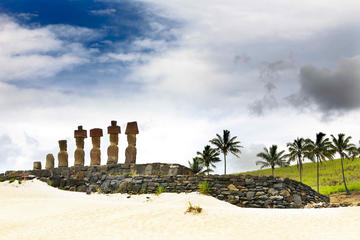
With its stretch of white sand fringed with Tahitian coconut palms, a backdrop of grassy hills and ocean waters that rarely dip below 64 degrees F (18 degrees C) even in the winter months, few places come as close to paradise as Anakena Beach. One of only three beaches on Easter Island, Anakena also plays an important part in the history of the island. It was here that King Ariki Hotu Matu'a first landed on Easter Island and later, the beach became a spiritual center for the Miru tribe - the remnants of which can be seen in the seven beautifully restored moai of Ahu Nau Nau …
» Hanga Piko
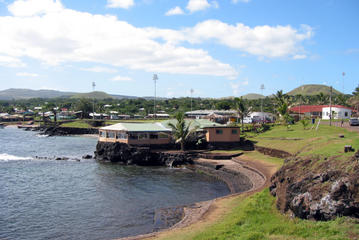
A short walk along the waterfront from Hanga Roa and overlooked by a lone moai, the sleepy harbor village of Hanga Piko is the main cargo port for Easter Island and the center of its small fishing industry. Most visitors come to Hanga Piko to enjoy a boat tour around the island, taking in coastal sights like the Tahai moai and the ceremonial village of Orongo before sailing around the offshore isles of Motu Iti, Motu Nui and Motu Kao Kao. Back on dry land, Hanga Piko's sole attraction is the weather-worn moai of Ahu Riata, but visit in the morning and you can watch the fishermen returning with their day's catch …
» Hanga Roa
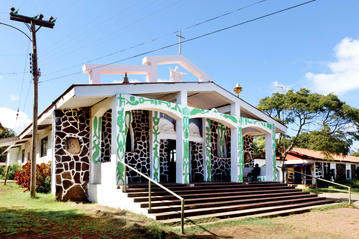
As Easter Island's sole town and home to its only airport, Hanga Roa is the obvious starting point for visitors to the island. Despite its diminutive size - about 5,000 residents call Hanga Roa home - it's still the focal point of local life. Almost all of the island's hotels, restaurants, shops and tourist services can be found here, but the town is also conveniently situated for visiting all of the island's top attractions. As well as strolling around the bustling fishing ports, browsing the artisan crafts market and swimming or surfing at the nearby Pea beach …
» Orongo Village
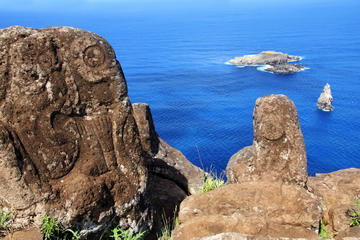
Perched on the edge of the gigantic Rano Kau crater, the long-abandoned village of Orongo is suspended between two wildly contrasting landscapes. To one side lies the murky crater lake and barren lava fields of an ancient volcano; to the other, the bright blue waters of the Pacific Ocean, dotted with the tiny isles of Motu Nui, Motu Iti and Motu Kau Kau. Believed to have been used from the late 1600s until the mid 1800s, Orongo was a ceremonial village of the Rapa Nui people, used solely during the annual Tangata Manu, or Birdman Ceremony …
» Puna Pau
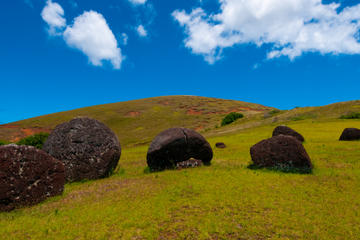
Archaeologists have long pondered the origins of Easter Island's iconic moai, and the ancient stone quarry of Puna Pau provides an important piece of the puzzle. Carved into the sides of a volcanic crater, Puna Pau is the spot from which the red volcanic rock, or scoria, was mined and used to sculpt the 'pukao- - the distinctive topknot that caps the heads of some moai. Dozens of pukao have been found around the island, all of which were made at Puna Pau, from where they were transported to the most important ahu (ceremonial sites) - no easy feat …
» Rano Raraku
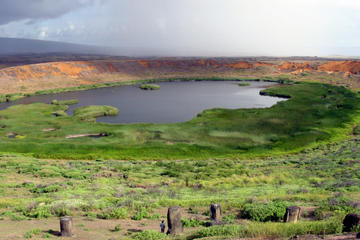
One of Easter Island's most unforgettable landmarks, the ancient volcano of Rano Raraku is home to the island's largest and most important archaeological site. Known as the quarry, this was where the island's iconic moai were carved, using the naturally formed tuff (a soft rock made from solidified volcanic ash), and then distributed around the island. About 95 percent of all the island's moai were carved at Rano Raraku, and although the site was abandoned in the late 18th century, it remains littered with a remarkable 396 incomplete moai …
» Tahai
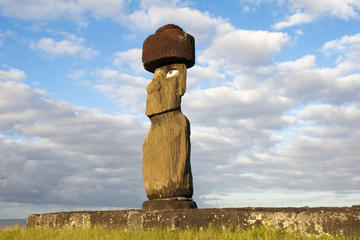
A trio of ahu (ceremonial platforms) lining the seafront with their backs to the ocean, the Tahai Ceremonial Complex is one of the most visited historic sites of Easter Island and an important part of the UNESCO-listed Rapa Nui National Park. Like many of the island's moai, the Tahai statues toppled over in the 18th century, but the site was among the first to be restored, a task undertaken in 1974 by American archaeologist William Mulloy, who is now buried on the site. The moai at Tahai are known for their unique designs - the Ahu Tahai …
« CHILE • Discover Chile • Easter Island




